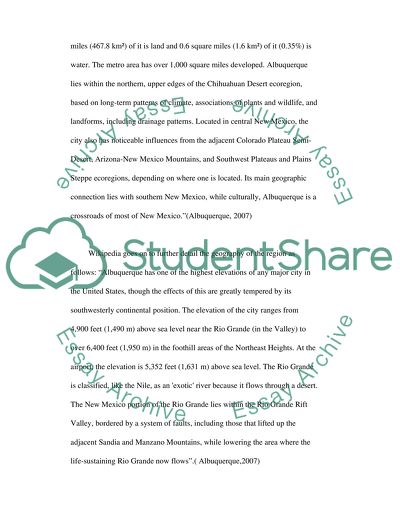Cite this document
(“How does New Mexico's (Albuquerque and Santa Fe) media (newspapers) Essay”, n.d.)
How does New Mexico's (Albuquerque and Santa Fe) media (newspapers) Essay. Retrieved from https://studentshare.org/miscellaneous/1511520-how-does-new-mexicos-albuquerque-and-santa-fe-media-newspapers-portray-issues-of-drought-and-water-allocation-in-the-state-o-geography-of-albuquerque-and-santa-fe
How does New Mexico's (Albuquerque and Santa Fe) media (newspapers) Essay. Retrieved from https://studentshare.org/miscellaneous/1511520-how-does-new-mexicos-albuquerque-and-santa-fe-media-newspapers-portray-issues-of-drought-and-water-allocation-in-the-state-o-geography-of-albuquerque-and-santa-fe
(How Does New Mexico'S (Albuquerque and Santa Fe) Media (newspapers) Essay)
How Does New Mexico'S (Albuquerque and Santa Fe) Media (newspapers) Essay. https://studentshare.org/miscellaneous/1511520-how-does-new-mexicos-albuquerque-and-santa-fe-media-newspapers-portray-issues-of-drought-and-water-allocation-in-the-state-o-geography-of-albuquerque-and-santa-fe.
How Does New Mexico'S (Albuquerque and Santa Fe) Media (newspapers) Essay. https://studentshare.org/miscellaneous/1511520-how-does-new-mexicos-albuquerque-and-santa-fe-media-newspapers-portray-issues-of-drought-and-water-allocation-in-the-state-o-geography-of-albuquerque-and-santa-fe.
“How Does New Mexico'S (Albuquerque and Santa Fe) Media (newspapers) Essay”, n.d. https://studentshare.org/miscellaneous/1511520-how-does-new-mexicos-albuquerque-and-santa-fe-media-newspapers-portray-issues-of-drought-and-water-allocation-in-the-state-o-geography-of-albuquerque-and-santa-fe.


